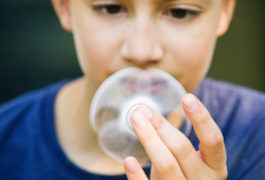Top autism gene tied to unusual skull, skeletal growth
People with mutations in CHD8, a top autism gene, tend to be tall and have large heads.
Rare or common, inherited or spontaneous, mutations form the core of autism risk.

People with mutations in CHD8, a top autism gene, tend to be tall and have large heads.

Extra copies of a gene called BOLA2 predispose people to autism and may protect against iron deficiency.

A new reference genome includes sequences collected from people around the globe, plugging major gaps in the current one.

A new analysis of nearly 40,000 people pinpoints 48 genetic variants that may determine the volume of certain brain areas.

People who have mutations in a gene called PHF21A tend to have a constellation of traits and conditions, including autism.

People with attention deficit hyperactivity disorder may carry certain rare, harmful mutations in many of the same genes as people with autism.

A new technique uses ultrasound instead of light to detect gene expression in cells.

Blocking one form of an enzyme implicated in autism eases unusual behaviors and seizures in mice missing a top autism gene.

A collection of rare genetic variants associated with autism and schizophrenia also seem to increase a person’s odds of having attention deficit hyperactivity disorder.

Autistic people who carry mutations in a gene called PTEN have distinct behavioral and motor problems.